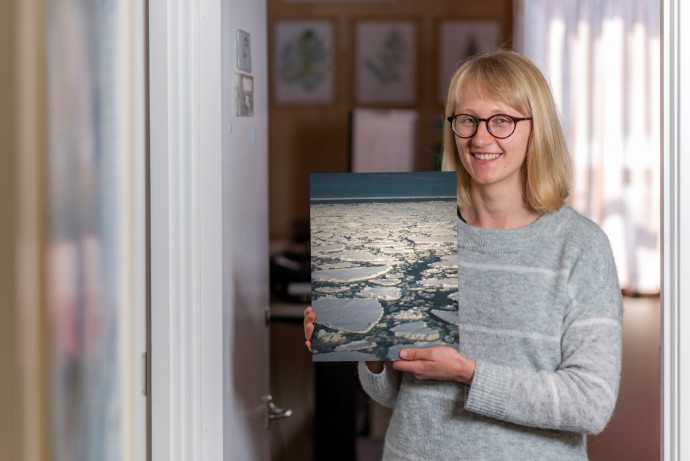News
Published 17 October 20182018 Hatherton Award: Ice floe size could be missing puzzle piece in global climate models

Ms Lettie Roach has been awarded the Hatherton Award for her scientific paper that outlines a new global model for sea ice floe sizes. This model has the potential to make significant improvements to the simulation of polar regions in global climate models.
Sea ice plays an important role in the global climate system. It determines how much of the sun's radiation is absorbed in the polar regions and influences atmospheric and oceanic circulation. In recent decades, sea ice extent has decreased dramatically in the Artic, while around the Antarctic, total sea ice extent was increasing until 2014, but has decreased markedly since then. Climate models have struggled to correctly simulate observed trends in sea ice extent, for reasons that are still unclear.
Climate models simulate interactions between atmosphere, sea ice and ocean on vertical and horizontal grids. Current models have assumed the pieces of sea ice within a model grid, which can be 50-100 km across, have the same size horizontally, with only the thickness varying. However, real-life sea ice is made up of discrete pieces of ice called floes, which can have widely varying horizontal sizes. The horizontal sizes of floes determine the speed of melting that occurs around the edges of the ice floes.
Lettie's paper presents a new sea ice model which simulates both floe sizes as well as thicknesses. Floe sizes change when new ice is created, ice melts or freezes, or when floes are broken up by ocean waves. While on a field expedition in the Southern Ocean, Lettie witnessed sea ice floes merging, increasing their size while decreasing their number. She realised that this process could be described by coagulation theory. She solved the equations to a simple formula, coded it up into a new model and found the new simulations agreed with sea ice observations in a second scientific paper.
The result is the world's first description of a freely-evolving sea ice floe size distribution in a global ocean-sea ice model. The extra information on floe size allows for a better representation of thermodynamic processes in the model, as well as inclusion of new physical processes that could not previously be described, such as fracture of sea ice by ocean surface waves. The new model has the potential to make significant improvements to the simulation of polar regions in global climate models, run at research centres all over the world.
The award selection committee said her paper very elegantly captures the five main processes that change the floe-size distribution in the first-ever such model and is truly impressive work for a researcher at the beginning of their career.
On receiving the award, Lettie said: “I am delighted that the paper has been recognised in this way and look forward to the exciting new opportunities that this research brings for polar climate modelling.
“I’m grateful to my co-authors, PhD supervisors and friends and family for all their support.”
Lettie completed a Masters in Mathematical Physics at the University of Edinburgh in 2015 and is currently completing her PhD at Victoria University of Wellington and NIWA.
Hatherton Award:
For the best scientific paper by a PhD student at any New Zealand university in chemical sciences, physical sciences, mathematical and information sciences.
Citation:
To Lettie Anne Roach for her paper which gives the world’s first description of a freely-evolving sea ice floe size distribution in a global ocean-sea ice model.
Publication details:
Roach, L. A., Horvat, C., Dean, S. M. and Bitz, C. M. (2018), An emergent sea ice floe size distribution in a global coupled ocean–sea ice model. Journal of Geophysical Research: Oceans.
